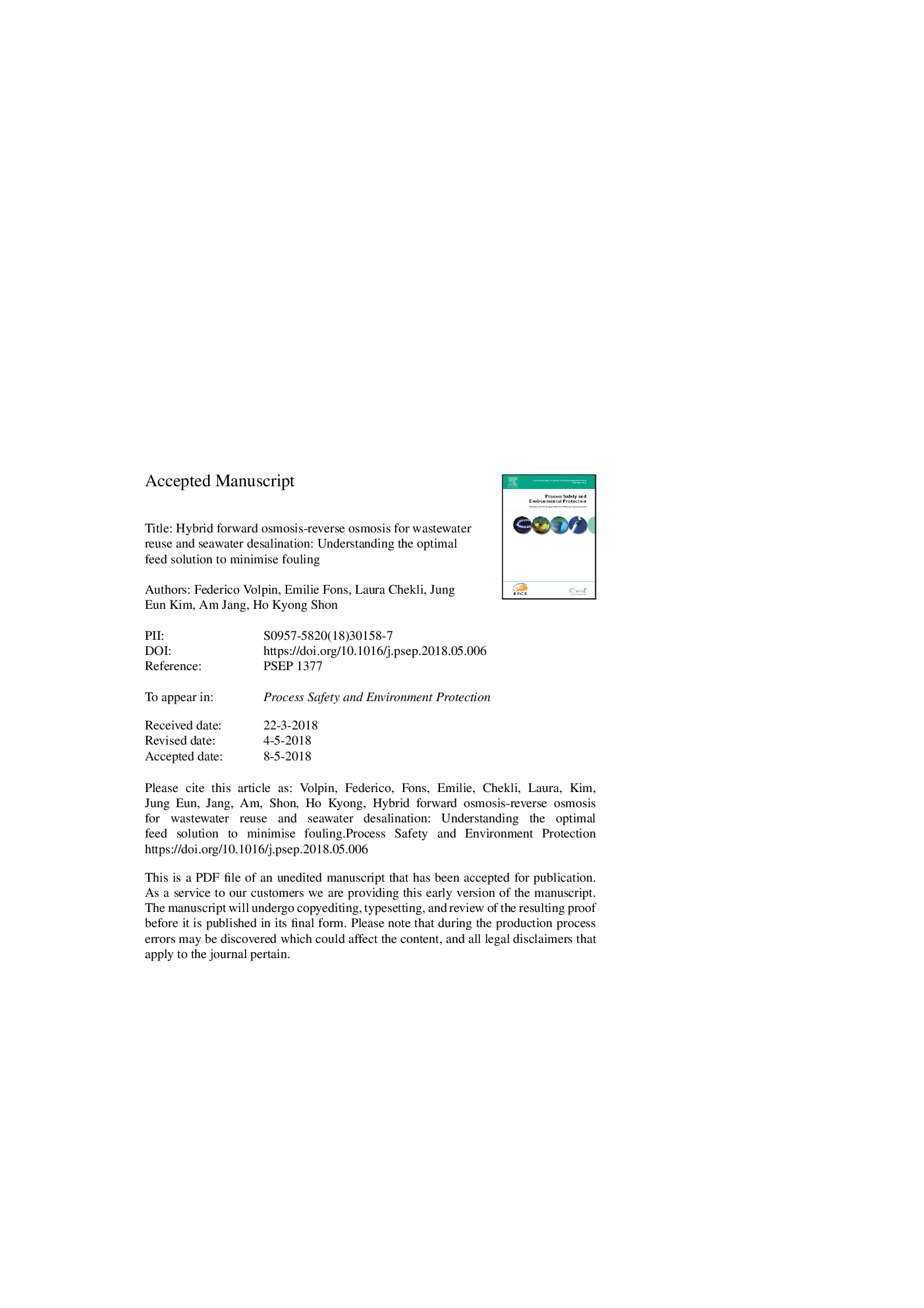| Article ID | Journal | Published Year | Pages | File Type |
|---|---|---|---|---|
| 6974000 | Process Safety and Environmental Protection | 2018 | 21 Pages |
Abstract
To enhance the seawater desalination energy efficiency forward osmosis - reverse osmosis (FO-RO) hybrid system has recently been developed. In this process, the FO “pre-treatment” step is designed to use seawater (SW) as draw solution to filter the wastewater (WW) while reducing the seawater osmotic pressure. Thereby reducing the operating pressure of the RO to desalinate the diluted SW. However, membrane fouling is a major issue that needs to be addressed. Proper selection of suitable WWs is necessary before proceeding with large-scale FO-RO desalination plants. In this study, long-term experiments were carried out, using state-of-the-art FO membrane, using real WW and SW solutions. A combination of water flux modelling and membrane characterisation were used to assess the degree of membrane fouling and the impact on the process performance. Initial water flux as high as 22.5Â Lmâ2Â hâ1 was observed when using secondary effluent. It was also found that secondary effluent causes negligible flux decline. On the other hand, biologically treated wastewater and primary effluent caused mild and severe flux decline respectively (25% and 50% of flux decline after 80 hours, compared to no-fouling conditions). Ammonia leakage to the diluted seawater was also measured, concluding that, if biologically treated wastewater is used as feed, the final NH4+ concentration in the draw is likely to be negligible.
Related Topics
Physical Sciences and Engineering
Chemical Engineering
Chemical Health and Safety
Authors
Federico Volpin, Emilie Fons, Laura Chekli, Jung Eun Kim, Am Jang, Ho Kyong Shon,
